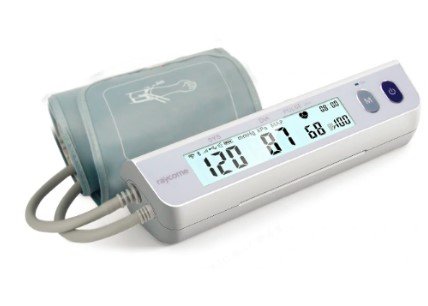Maintaining Cleanliness and Safety in the Medical Lab and Phlebotomy Procedures
Summary
- Proper Hand Hygiene is essential to prevent the spread of infections in the medical lab and during phlebotomy procedures.
- Regular cleaning and disinfection of equipment and work surfaces help maintain a safe and sanitary environment for both patients and healthcare workers.
- Following proper protocols for handling and disposing of biohazardous materials is crucial to ensure safety in the workplace.
Working in a medical lab or performing phlebotomy involves handling specimens and interacting with patients, making it crucial to maintain cleanliness and safety in the workplace. By following established protocols and best practices, healthcare professionals can prevent the spread of infections, protect themselves and their patients, and ensure the accuracy of Test Results. This article will discuss the importance of maintaining cleanliness and safety in the medical lab and during phlebotomy procedures, as well as provide tips on how to achieve this effectively.
Importance of Hand Hygiene
One of the most important ways to prevent the spread of infections in the medical lab and during phlebotomy is proper Hand Hygiene. Healthcare workers should wash their hands regularly with soap and water or use alcohol-based hand sanitizers before and after every patient interaction, after removing gloves, and after touching any potentially contaminated surfaces. This simple practice can help reduce the risk of transmitting harmful pathogens and protect both patients and Healthcare Providers from infection.
Tips for Proper Hand Hygiene:
- Wash hands for at least 20 seconds with soap and water.
- Cover all surfaces of the hands, including the palms, back of hands, between fingers, and under nails.
- Rub hands together vigorously and rinse thoroughly with water.
- Dry hands with a clean towel or air dryer.
- Use hand lotion to prevent dryness and irritation.
Cleaning and Disinfection
In addition to proper Hand Hygiene, regular cleaning and disinfection of equipment and work surfaces are essential to maintain a safe and sanitary environment in the medical lab and during phlebotomy procedures. Contaminated surfaces can harbor harmful microorganisms that can be transmitted to patients or healthcare workers, leading to infections and other adverse outcomes. By following established protocols for cleaning and disinfection, healthcare professionals can reduce the risk of Cross-Contamination and ensure the accuracy of Test Results.
Best Practices for Cleaning and Disinfection:
- Use EPA-approved disinfectants to clean surfaces regularly.
- Follow manufacturer's instructions for proper use of cleaning agents.
- Dispose of contaminated materials in biohazardous waste containers.
- Wear appropriate personal protective equipment (PPE) while cleaning and disinfecting surfaces.
Handling Biohazardous Materials
Another important aspect of maintaining cleanliness and safety in the medical lab and during phlebotomy is proper handling and disposal of biohazardous materials. Blood and other bodily fluids can contain infectious agents that pose a risk to healthcare workers and others if not managed correctly. By following established protocols for handling and disposing of biohazardous materials, healthcare professionals can reduce the risk of exposure and ensure the safety of everyone in the workplace.
Guidelines for Handling Biohazardous Materials:
- Use appropriate PPE, such as gloves, gowns, and face shields, when handling biohazardous materials.
- Follow OSHA guidelines for safe handling and disposal of biohazardous waste.
- Label all biohazardous materials and containers properly to prevent accidents and contamination.
- Use leak-proof and puncture-resistant containers for storing and transporting biohazardous waste.
By following these tips and best practices for maintaining cleanliness and safety in the medical lab and during phlebotomy procedures, healthcare professionals can create a safe and sanitary work environment that protects both patients and healthcare workers. By prioritizing Hand Hygiene, cleaning and disinfection, and proper handling of biohazardous materials, healthcare professionals can prevent the spread of infections, reduce the risk of accidents and injuries, and ensure the accuracy of Test Results. Ultimately, maintaining cleanliness and safety in the workplace is essential for providing high-quality care and promoting the well-being of everyone involved in the healthcare process.

Disclaimer: The content provided on this blog is for informational purposes only, reflecting the personal opinions and insights of the author(s) on the topics. The information provided should not be used for diagnosing or treating a health problem or disease, and those seeking personal medical advice should consult with a licensed physician. Always seek the advice of your doctor or other qualified health provider regarding a medical condition. Never disregard professional medical advice or delay in seeking it because of something you have read on this website. If you think you may have a medical emergency, call 911 or go to the nearest emergency room immediately. No physician-patient relationship is created by this web site or its use. No contributors to this web site make any representations, express or implied, with respect to the information provided herein or to its use. While we strive to share accurate and up-to-date information, we cannot guarantee the completeness, reliability, or accuracy of the content. The blog may also include links to external websites and resources for the convenience of our readers. Please note that linking to other sites does not imply endorsement of their content, practices, or services by us. Readers should use their discretion and judgment while exploring any external links and resources mentioned on this blog.
